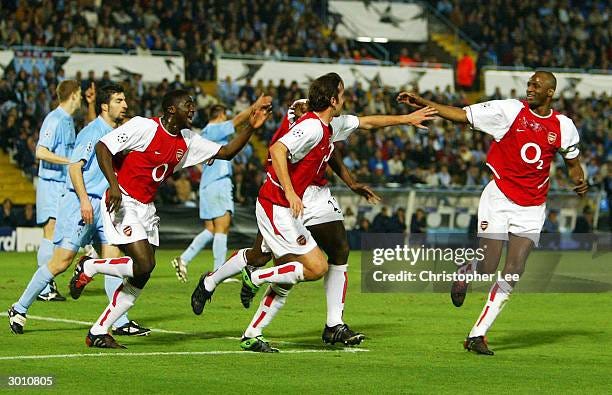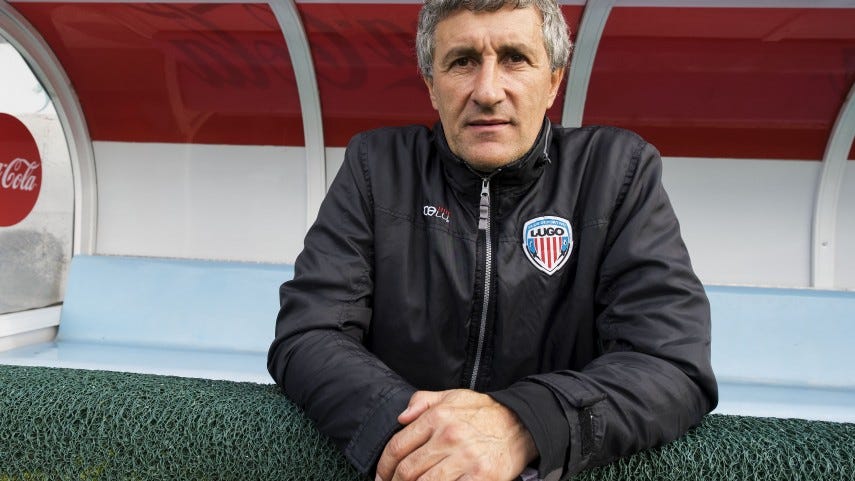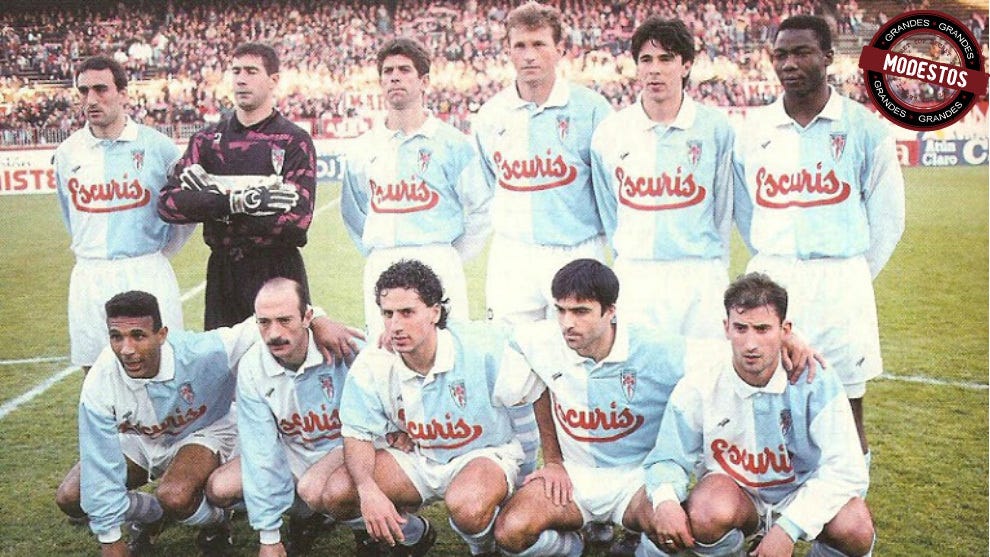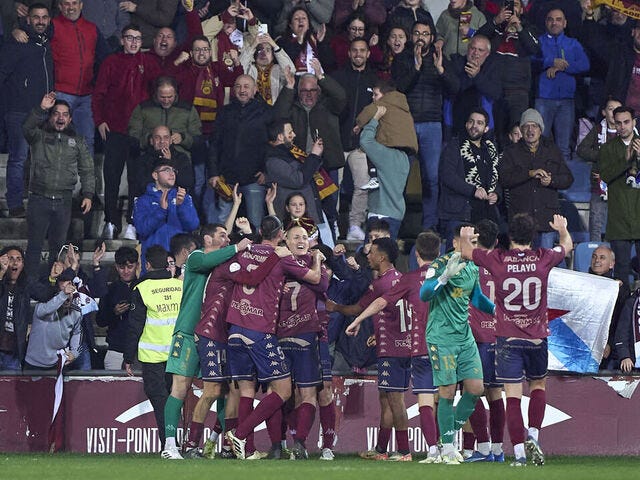State of Play: The Regions of Spain: Galicia
Spain is made up of 17 unique and autonomous regions and regional pride is as big as national pride in what can feel a fragmented country.
The land of a thousand rivers, Galicia is the Northwestern region of Spain that sits above Portugal. The region is three times the size of the region of Madrid but where Madrid has over 7 million inhabitants, Galicia has just 2.7 million in what is a green and sprawling land.
While many picture Spain as sun, sangria and beaches and hotels galore, Galicia is rainy, as it faces out to the Atlantic, full of forests and mountain ranges and a green all around. Galicia also have their own language, Gallego 70% of inhabitants say they can speak it to some degree. Clubs in the region will also regularly communicate with their fans in Gallego as well.
Football wise the region has had a big impact with it’s various clubs and we will look at some of those sides below.
Los Celestes
Celta Vigo derive their name from the Celts which the Galicians ethnically come from as a group. Vigo as a city is Galicia’s biggest city with 294k inhabitants the city is perceived as the more working class city out of the main cities of Galicia but being right on the sea it is well worth a visit. The football team have spent the majority of their history in La Liga although they’ve never won the league or the Copa. Celta’s glory days came in the 90s which unfortunately for them was also the glory days of their arch rivals who we will learn more about later Depor. The 90s and early 2000s saw Celta earn the name EuroCelta due to their European performance where they knocked sides such as Liverpool out of the UEFA Cup, and made the Champions League in 2004 losing to Arsenal in the last 16. That though came the same season Celta plunged into Segunda.
(Getty Images, Christopher Lee)
The side came back up but were so unpredictable, finishing 6th on their return to La Liga in 2006 and then relegated the following season. Back in Segunda Celta really struggled and almost dropped to the third tier in 2009. The club spent five seasons languishing in Segunda until they returned in 2011/12 after finishing second, the winners of Segunda you ask? of course it was Depor. Celta though have proved to be the more stable of the two having not left La Liga since and appearing in a Europa League semi final against Man Utd.
Balaidos their stadium has had extensive work done on it in recent years to make it more fan friendly given the seating was often quite far away from the pitch. Celta have also always been known for their academy and production of talent and nobody epitomises that more than Iago Aspas, club captain with over 500 games, 200 goals and counting and over 80 assists. Aspas has gone to Liverpool and Sevilla but always felt the draw to come back to his homeland and to his home city, again something that is quite common in this region as we will see.
While off the pitch things look good, on the pitch the last few seasons while they’ve been the dominant club in Galicia have still been tough. Five of the last six seasons have been relegation battles and a constant change in the dugouts. It has often felt at times like Aspas is the only thing holding them back from relegation as he constantly pulled them out of the fire. This season though under Claudio Giraldez the club has looked a lot better , Giraldez is from the same province as Vigo and has promoted young players which makes sense given he was the B team coach, while also playing an attractive style of football. The club currently sit in the top half and feel as if they’re on the right path and with a Galician core once more.
Super Depor
Arguably Galicias most famous team their history has actually been a lot more inconsistent than many might think. Growing up in the 90s and early 2000s given Depor were a constant in the Champions League you might think they’d always been a giant of Spanish football but the reality is more nuanced. They’ve spent 46 seasons in the top flight, 42 in the second and 6 in the third and below.
From the city of Coruña, Galicia’s second biggest city the club had never really pulled up any trees until an influx of money in the 90s saw Depor become Super Depor. With the likes of Bebeto, Mauro Silva and Djalminha Depor became sexy and finished 3nd twice.
They clinched the title in the 1999/2000 season becoming the second smallest city to have won La Liga. They became established in the Champions League with famous nights such as beating AC Milan 4-0 and on Real Madrids 100th anniversary they beat them in the Copa del Rey final held at the Bernabau.
They had established themselves not just as the force in Galicia but also as a force in Spanish football vying with Barca, Real Madrid and Valencia for supremacy but it was built on quick sand. As the veterans of the squad left or retired the money wasn’t there to replace them and the debt had swelled and all of a sudden Depor became a midtable side as we reached 2005.
If Depor fans hoped that midtable obscurity is the lowest they’d drop they were soon in for a shock, in 2006/07 they finished 13th, then bounced between the middle of the table before disaster struck. The 2010/11 season showed how badly the club had dropped, where they once had Roy Makaay and Diego Tristan up front they now had Adrian and Lassad Nouioui good players but not of the calibre they had previously.
Juan Carlos Valeron was still playing but not to the level of his glory days and they started the season failing to win any of their first eight matches. Despite a rally they were always in the relegation mix and on the final day results in other matches sealed their fate. To their credit they bounced straight back in Segunda recording 91 points, finishing as champions and doing the double in the derbi over Celta. This though started their yo-yo period and the club were relegated immediately back before again instantly winning promotion. Four years in La Liga followed but they never finished higher than 16th, the once might of Depor was now a side who battled to stay up.
When they did go back to Segunda they almost came straight back up but for a missed Pablo Mari header against Mallorca in the last minute that still haunts Depor fans.
The following season though the side had to battle to stay even in the second tier and their fate was sealed in bizarre circumstances. On the final day Depor took on Fuenlabrada who had a chance of the play-offs with Depor needing to win and other results going their way. Fuenlabrada had a outbreak of COVID in the squad meaning they couldn’t play and the match was suspended but La Liga pressed ahead and let the other matches go ahead. Rivals Albacete and Lugo won meaning Depor could do nothing and on the 20th anniversary of their La Liga title they found themselves in the third tier.
The third tier is notoriously hard to get out of and Depor initially struggled and with the restructuring of the third tier they had to first aim for promotion to Segunda then for a technical promotion in the second phase to stay in the third tier the club avoided being relegated down to the fourth tier by just one point. Play-off failure over the next two seasons left it feeling like Depor were cursed to be stuck in the third tier forever until Lucas Perez a boyhood fan, from the city paid his way out of his contract with La Liga side Cadiz to return to his club for a third spell.
With a youthful side mixed with some experienced names such as Lucas and Mikel Balenziaga they stormed the second half of the 23/24 season to finally clinch promotion to Segunda.
They had a tough start to life in Segunda and after dispensing with their Head Coach Imanol Idiakez they now find themselves in the top half. Financially the club is debt free and owned by ABANCA a Galician bank from La Coruña. On the pitch while captain Lucas Perez left things are looking good with a crop of talented youngsters, Yeremay their winger was subject to interest from Chelsea and Napoli in January.
Being a Depor fan must be like being on a rollercoaster but things look good for the future and the club looks stable and secure which it hasn’t for a long time.
Galician derby
Given both sides have spent much of their history in the top two flights this derby has been a common one although not played between the two sides since 2018. While Depor have been more successful on the national stage, Celta actually have the better record in this derby and in recent years have been able to be smug with versions of this derby played with Celta’s B team due to Depors drop down the leagues. This derby will always kick-off with a moment of unity as both sets of fans sing the Galician anthem, then the pleasant feeling ends. These two sides stand out above all else in the region as the two main clubs and the rest often feel like an afterthought but they also have some great stories.
The Green Devils
Racing Ferrol are from the same province as Depor and from the harbour city of Ferrol. The club has often spent it’s life in the shadow of it’s more illustrious neighbour but Racing Ferrol have a proud history themselves with a good fanbase and an average attendance around 6000. The club has spent most of it’s history in the second tier and although they’ve never made it to La Liga they have threatened on a couple of occasions.
In 2022/23 Racing Ferrol were in the third tier facing off against fellow Galician side Depor. A talented squad mixed with veterans and younger players cast off by teams such as Celta shocked their rivals and stormed to the title. Their return to Segunda after a 16 year absence saw them become one of the stories of the season.
With talented wingers such as Carlos Vicente and Iker Losada they caused sides all sorts of trouble and at the end of the first half of the season they found themselves second. Unfortunately Alaves swooped in and paid Vicente’s buyout clause of just €300k. That left Ferrol one dimensional and sides just doubled up on Losada and snuffed him out. The Galician outfit ultimately finished 10th and almost as soon as the season ended it was announced Betis had paid the buyout clause for Losada. It wasn’t just him that departed with experienced players such as Delmas, Bernal and Cantero all leaving for Segunda sides. The club changed their signing focus and went for experience and it’s ended with disastrous consequences.
This season an aging side have been badly found out, with players such as Bebe and Naldo signed and in their late 30s, Racing Ferrol have found themselves cast adrift in the relegation spots and staring down the barrel at a return to the third tier. The aim now has to be for a reset and the club to return to the model of picking up younger players
Luguiño
Little Lugo might feel like an insult but for this plucky Galician side it’s a badge of honour given the bloody noses they’ve delivered over the last decade. A club who had spent all but one season out of Segunda suddenly became an established Segunda side in the 2010s. Lugo is the fourth largest city in Galicia and it feels right that they’re probably the fourth biggest club from the region albeit Pontevedra fans might argue against that. The man behind their rise was Head Coach Quique Setien who became better known for his spell in charge of Barca.
He not only took them to Segunda in his six year reign but then established them as a middle of the pack side in the division. In 2015 he left but the club stayed in the division and continued to be a stepping stone for coaches such as Francisco and Ruben Albes. The club though churned through coaches and sporting directors after Setien left but they stayed in the division until 23 when they finished bottom of the pack.
Life in Primera RFEF hasn’t been easy for little Lugo and they currently hover just above the relegation places.
Flowing up?
CD Arenteiro are named after a river that runs through the town of Carballino. They look to be a side flowing upstream as they embrace the greatest spell in the clubs history. A yo-yo side who have spent their history floating between the sixth to fourth tier are now finding themselves in the promotion battle for Segunda.
(photo from the brilliant Estadios de Espana website)
The pictures of the clubs ground shows you just how small they are and it’s amazing they’re even finding themselves in the third tier. It’s not just that they’ve been promoted and challenging again but the club have had famous nights in recent seasons defeating Almeria, taking on Atletico Madrid and winning the Copa RFEF. With Cultural Leonesa so far ahead the play-off spots feel wide open and it could be quite the story if this Galician side make it.
Giantkillers
Ourense CF are one of the offshoots of many teams called Ourense who have been created and folded over the years. This iteration lived in the lower tiers until recent seasons when they gained promotion last season. Having finally gained promotion to the third tier they have made a name for themselves this season in the Copa del Rey defeating firstly Depor then Real Valladolid before being knocked out in the last 16 by Valencia. The town of Ourense has a big Portuguese population with as many as 31.% of the inhabitants making the trip over the border to live in Spain. They have been on a run since their Copa exploits and now look to be establishing themselves in Primera RFEF.
The Capital club
Santiago de Compostela is the capital of the region of Galicia but it’s team despite some amazing seasons is one that has lived in the shadow of it’s rivals in the region. SD Compostela have had numerous guises through the years due to financial issues and during the 90s they even played out four seasons in La Liga. Those times though look far away now with club in the fourth tier. Indeed they don’t look to be coming back anytime soon as they currently sit in the relegation places down to the fifth tier.
Their greatest contribution to football might well be the side who were on the receiving end of a Ronaldo Nazario wondergoal that left Bobby Robson shaking his head in disbelief.
The fallen club
Pontevedra CF might not seem like much of a household name but in the 60s the side had a spell in the top flight with 6 seasons in La Liga and two top ten finishes. Right now they seem a world away from those days and they’ve had just one season in the top two tiers since 1978. They did though remind Spain they exist this season with a thrilling Copa del Rey run where they defeated Levante 4-1, beat Villarreal 1-0 and pumped Mallorca 3-0 before falling to Getafe in the last 16. It wasn’t just the victories but the manner which so impressed people. Against all those sides they dominated the ball pressed high and played great football. It does though look to have hampered their league campaign with a tail off in the fourth tier after the cup run as they battle with Numancia for a chance of promotion.
State of play
It’s a mixed state of affairs, after years of doom and gloom it feels like Celta and Depor are coming out of the darkness and have a bright future. Celta have moved away from their own model and are now promoting more from within and look to be moving away from the perennial relegation scrap. For Depor institutionally they look much healthier with debt removed and have a talented crop of youngsters but when will the pressure start and fans will soon expect a promotion push. Racing Ferrol have had a terrible season after such a promising return to Segunda but if they can clear the decks and go back to bringing in Galician players cast off by others they too could return to Segunda. Arenteiro could be a surprise contender for a play-off spot to Segunda and that would be some story while Ourense look to return to stability and the third tier. Compostela seem a bit of a lost cause but who knows what the future might hold for them and for Pontevedra they need to return to their Copa form as they aim to return to the third tier.












